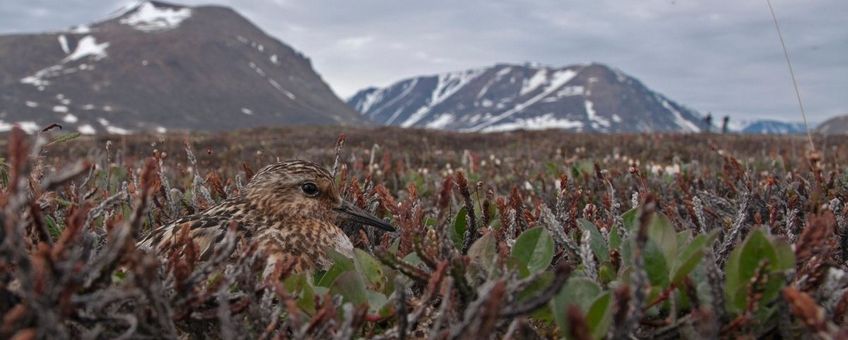
Breeding season not increasingly earlier, but more unpredictable
NIOZ Royal Netherlands Institute for Sea ResearchThis is written in a recent paper in Current Biology, by an international group of biologists, including NIOZ researchers Jeroen Reneerkens, Tom Versluijs and Mikhail Zhemchuzhnikov. "One year the birds may be too late to take advantage of the peak in insects, while in other years a lot of snow remains, leaving hardly any food for the chicks", Jeroen Reneerkens says.
Earlier and earlier
The article is based on long-term research at Zackenberg, a Danish research station in northeastern Greenland. Measurements of the number of insects that emerged from the soil around the station in the springs between 1996 and 2005 showed a marked advance. Flowers bloomed earlier and insects emerged from the soil earlier, as many as 10 to 30 days earlier during that 10-year period. During the same period, dunlin, sanderling and turnstone laid their first egg at most a few days earlier than average.
 Breeding sanderling in Greenland (Source: Jeroen Reneerkens (NIOZ))
Breeding sanderling in Greenland (Source: Jeroen Reneerkens (NIOZ))
Spread
By now, the researchers can analyze a 25-year measurement series, and spring starts do not continue advancing. On average, arctic flowers bloom more or less around the same time, insects emerge from the soil around the same time, and the three wader species also lay their first egg around the same date. "At the same time, we do see that the deviation during that period has increased considerably", Reneerkens said. "We see extremely warm springs with very early plants and insects, but also springs with extremely high snowfall, which sometimes makes it almost impossible for the birds to breed."
Two extreme years
"In 2018, we experienced such an extreme year", Reneerkens recalls. "There was so much snow throughout the breeding season, we only found one nest. A year later, we experienced the 'earliest' year in the entire series of survey years. The snow melted away early, so most of the insects had already disappeared by the time the sanderling chicks hatched at more or less the normal time."
 Research station Zackenberg (Source: Jeroen Reneerkens (NIOZ))
Research station Zackenberg (Source: Jeroen Reneerkens (NIOZ))
Not numbers count, but weights
"To see if there really is a mismatch between the breeding season of a migratory bird like the sanderling and the appearance of insects, you would have to do more than just count insects." This is the opinion of Tom Versluijs, PhD candidate at the University of Groningen and co-author of the article in Current Biology. "For a chick, the weight of the insects on the tundra is more important than the numbers. We see that the peak in insect mass is often a week after the peak in numbers. But even then, we should not be blinded by average temperatures and average dates that the insects appear. It is mainly the unpredictability that a bird like the sanderling has to deal with. In its wintering grounds in the Netherlands or Africa, it has a hard time forseeing what spring will bring in Greenland."
Text: NIOZ
Photos: Jeroen Reneerkens, NIOZ (lead photo: breeding sanderling)
